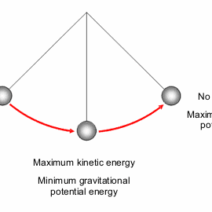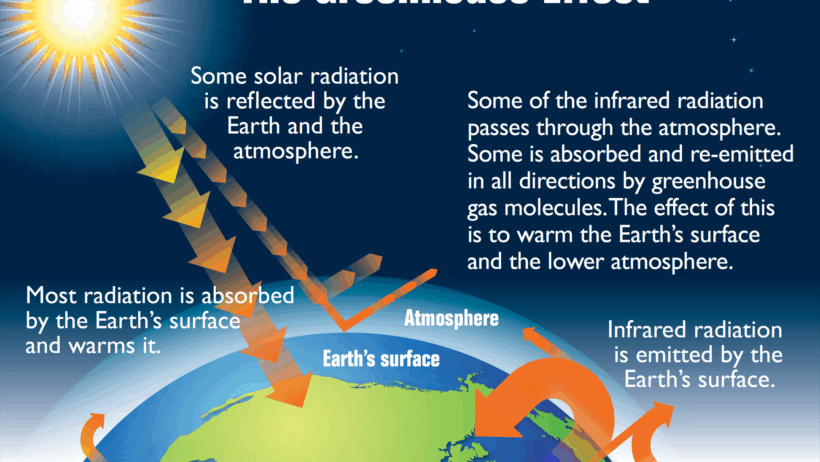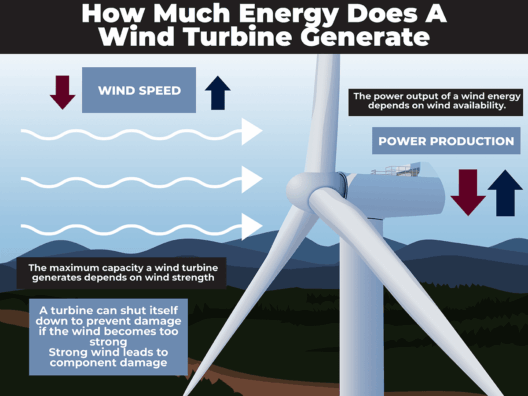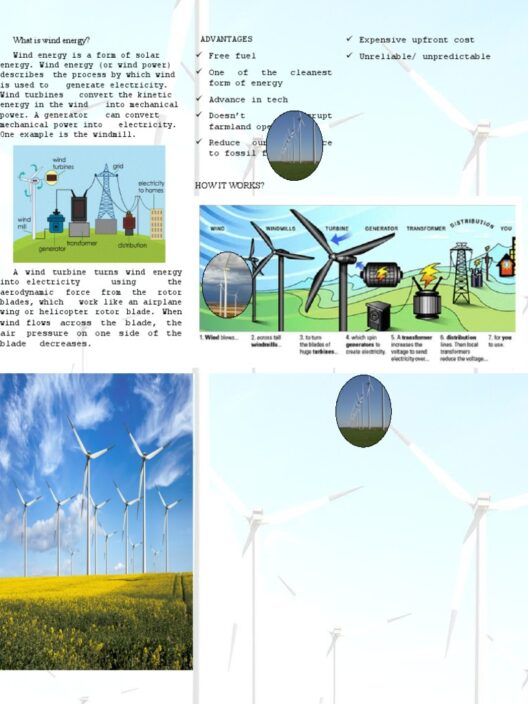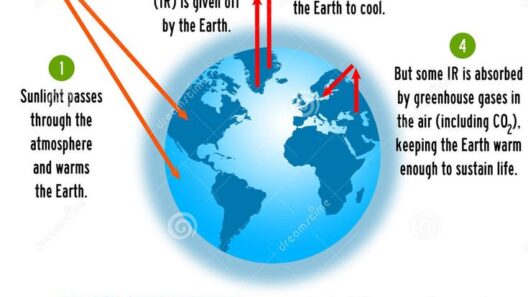The Greenhouse Effect and Its Role in Global Warming
The phenomenon known as the greenhouse effect is akin to a well-tailored blanket enveloping our planet, nurturing life while simultaneously stifling it. This duality embodies the essence of the relationship between Earth’s atmosphere and climate—a delicate dance of energy balance that has profound implications for our environment. Understanding how this effect contributes to global warming unveils the intricate mechanisms that not only define climatic changes but also challenge our very existence.
At its core, the greenhouse effect arises from the interaction between solar radiation and the gases that constitute our atmosphere. The sun radiates energy in the form of light, some of which is absorbed by the Earth, while the remainder is reflected back into space. This absorption acts as the initial alchemy, transforming sunlight into heat. Earth, like a mirror reflecting sunlight, casts off some of this acquired energy back toward the cosmos. However, certain atmospheric gases, known as greenhouse gases (GHGs), trap a portion of this outgoing energy, ensconcing the planet in warmth. This process is essential; without it, Earth would be a frigid, lifeless orb. But how does this advantageous process morph into the dilemma of global warming?
Understanding Greenhouse Gases: The Complicit Players
To fully appreciate the greenhouse effect, one must first identify the key players in this atmospheric drama. Greenhouse gases—primarily carbon dioxide (CO2), methane (CH4), nitrous oxide (N2O), and water vapor—act as the invisible shields that concern climate scientists. Picture them as the protective walls of a greenhouse; they keep warmth inside while allowing sunlight to penetrate, facilitating vital processes such as photosynthesis.
Yet the plot thickens as human activity amplifies these natural emissions. Industrialization, deforestation, and the combustion of fossil fuels inject copious amounts of CO2 into the atmosphere. Methane, emitted during agricultural processes and decomposing waste, possesses a global warming potential 25 times greater than CO2 over a 100-year span. This unbridled release of GHGs thickens the atmospheric blanket, trapping excess heat that would otherwise escape. The consequence? A progressively warmer planet that straddles the precarious line between nurturing and hostile.
The Energy Imbalance: Repercussions of Excessive Heat Retention
Imagining Earth as a gigantic energy reservoir helps illustrate the repercussions of this energy imbalance. When greenhouse gases trap more heat than the planet can naturally disperse, an overabundance of energy manifests in various forms—rising temperatures, melting glaciers, and erratic weather patterns. Each degree of warming resonates with increasing acuity, igniting distress signals that reverberate through ecosystems, societies, and economies.
Moreover, these changes are not mere statistical anomalies; they translate into tangible consequences for both the environment and humanity. For instance, increased temperatures result in the accelerated melting of polar ice caps and glaciers—an alarming phenomenon that contributes to rising sea levels, poised to submerge coastal regions and displace millions. Meanwhile, the increased frequency of extreme weather events exemplifies the mercurial nature of a warming world, leading to devastating storms, droughts, and heatwaves that dismantle agricultural stability and threaten food sufficiency.
A Tipping Point: The Urgency of Action
Science now indicates that we are approaching a critical tipping point, a juncture at which the effects of global warming may spiral beyond our control. Ocean warming, acidification, and the loss of biodiversity add layers of complexity to the challenge at hand. The ramifications of inaction echo across generations, rendering our current trajectory a focal point of concern for future inhabitants of this planet.
To illustrate, consider the coral reefs—the vibrant, biodiverse havens of the ocean that are now under siege from rising sea temperatures and acidity levels. As these reefs bleached and died, entire marine ecosystems collapsed, leading to a cascade of negative impacts on fisheries, tourism, and coastal protection. The message is clear: failure to address the greenhouse effect and its attendant consequences will culminate in a world where our environmental foundations become irrevocably eroded.
The Path Forward: Solutions and Collective Responsibility
Confronted with this daunting reality, it is essential to embrace solutions that mitigate the greenhouse effect and promote sustainability. It is not solely the province of governments and corporations—every individual is a cog in this environmental machine. Efforts such as transitioning to renewable energy sources, enhancing energy efficiency, and adopting sustainable agricultural practices can collectively decrease greenhouse gas emissions.
Furthermore, reforestation and adopting carbon sequestration techniques furnish natural avenues to draw down atmospheric CO2 levels. Community-driven initiatives hold transformative potential while fostering awareness and galvanizing collective efforts to combat climate change. By uniting disparate voices and perspectives, the quest for environmental harmony evolves into a collaborative movement that transcends national boundaries and ideologies.
In closing, while the greenhouse effect serves as a fundamental process that maintains Earth’s temperature, it is imperative to recognize its potential for harm when exacerbated by human activities. The intricate mechanisms driving global warming warrant serious attention and immediate action. By fostering a holistic understanding of our planet’s systems, we can embark on a journey toward sustainable coexistence, ensuring that future generations inherit a world that thrives rather than merely survives.
